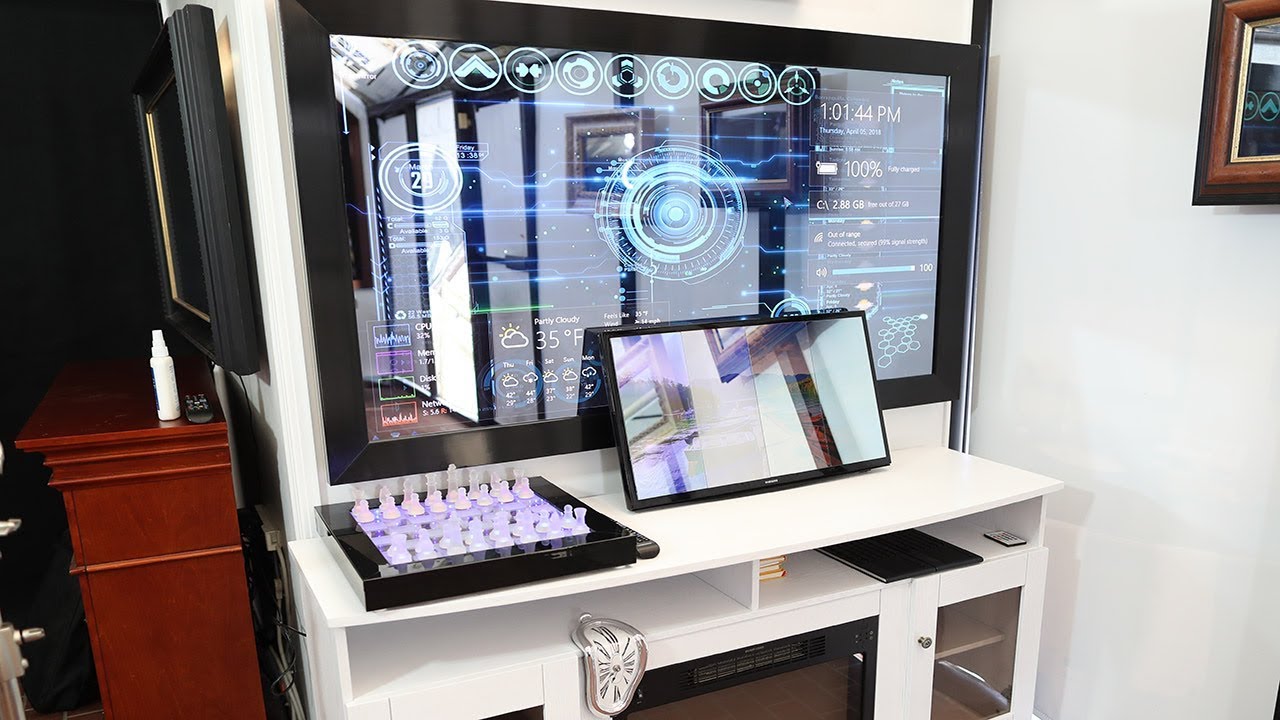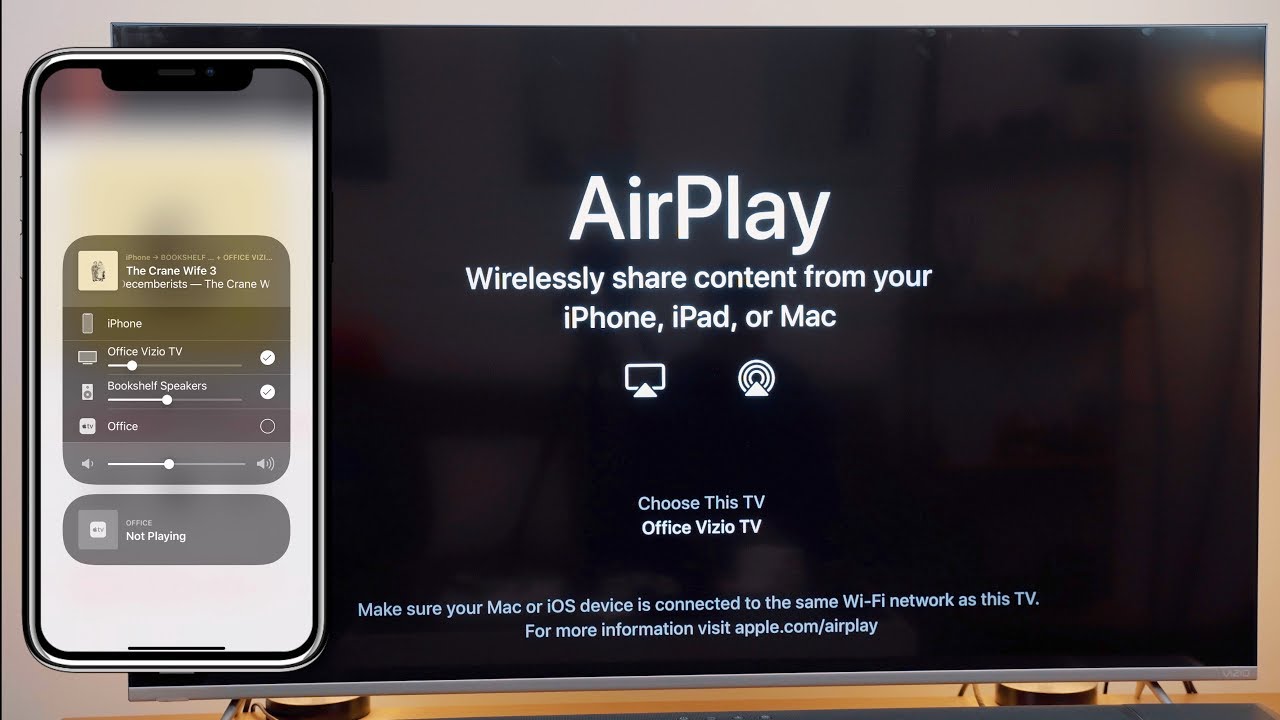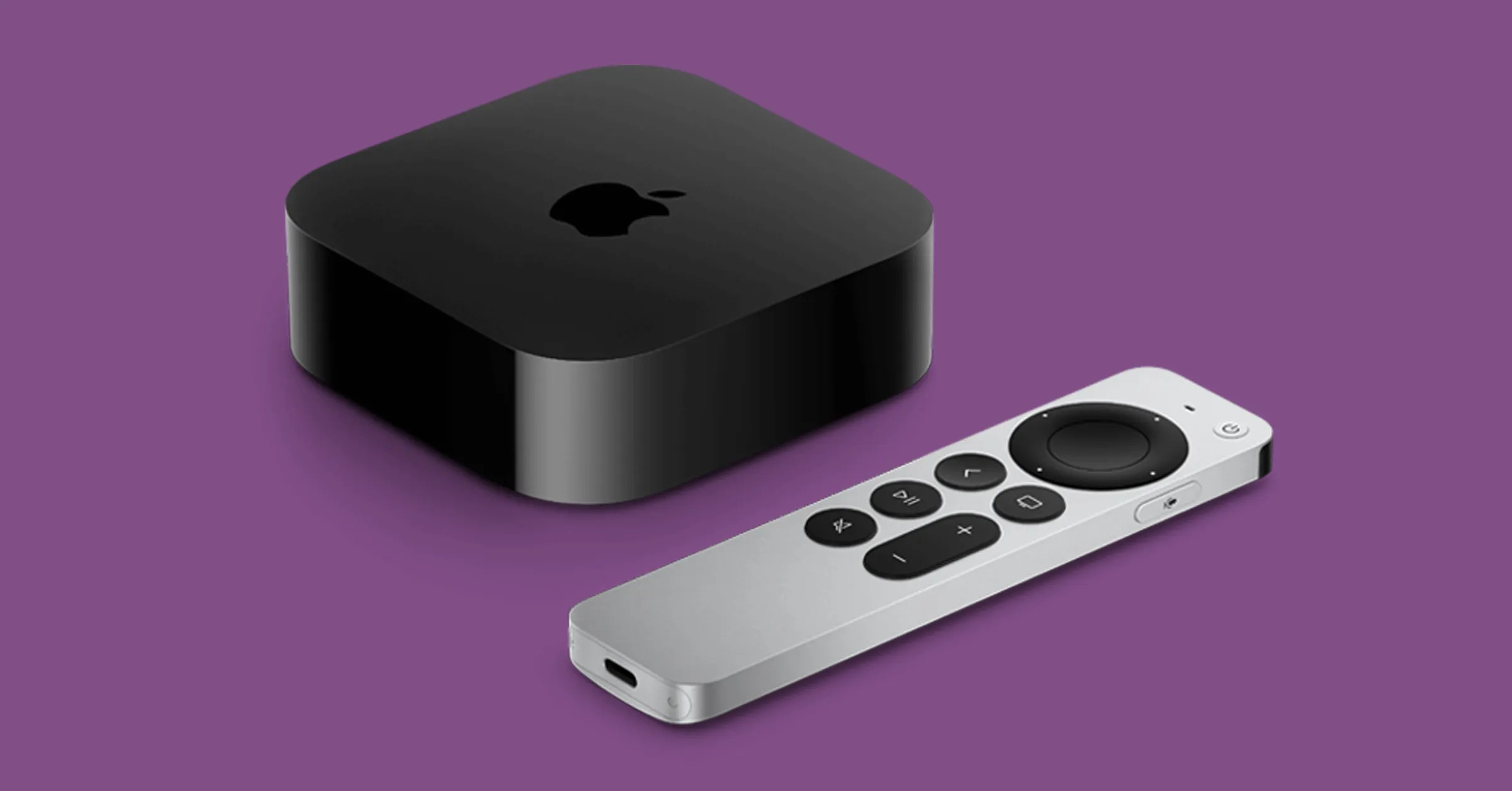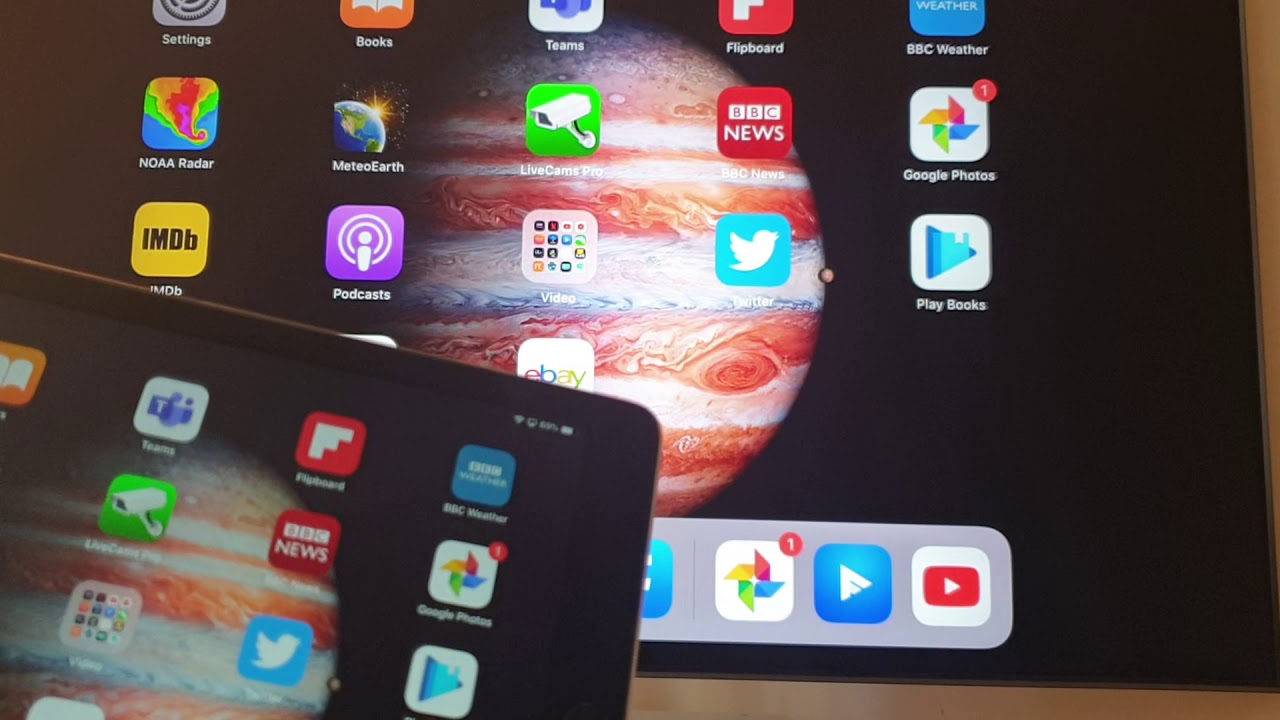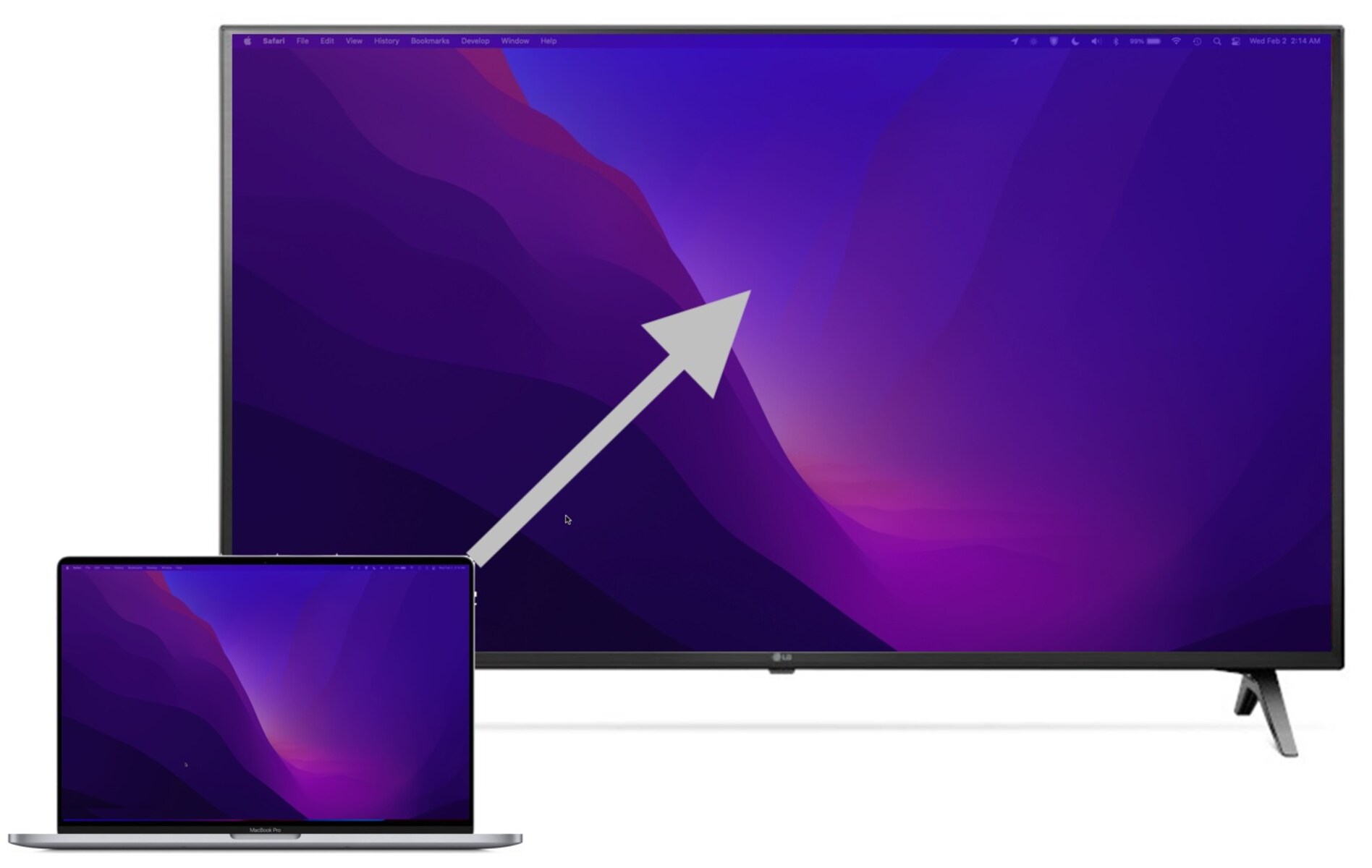Introduction
Welcome to this guide on how to screen share with Apple TV. Screen sharing allows you to mirror your device’s screen onto your Apple TV, providing a convenient way to share presentations, videos, photos, and more with a larger audience. Whether you want to showcase your latest work or enjoy a movie night with friends, screen sharing on Apple TV can enhance your experience.
Apple TV is a versatile streaming device that enables you to access a wide range of content from various apps and platforms. However, sometimes you may need to share content that is not available directly on Apple TV. By screen sharing from your iPhone, iPad, Mac, or Windows PC, you can effortlessly display your device’s screen on the TV, giving you more flexibility and control over what you share.
In this guide, we will walk you through the step-by-step process of screen sharing with Apple TV using different devices. We will cover screen sharing with iPhone or iPad, Mac, and Windows PC. Whether you have the latest Apple devices or older ones, we have got you covered.
Before we dive into the specific instructions for each device, let’s take a moment to understand the benefits of screen sharing and why you might want to utilize this feature.
What is screen sharing?
Screen sharing is a feature that allows you to display the contents of your device’s screen onto a larger display, such as a television or projector. It enables you to mirror what is happening on your device in real-time, providing an immersive and engaging experience for both you and your audience.
With screen sharing, you can effortlessly share presentations, videos, photos, documents, and even gameplay with others. It eliminates the need for everyone to huddle around a small device screen while ensuring that everyone can see the content clearly on a larger display.
Screen sharing is particularly useful in a variety of scenarios. For business professionals, it can enhance presentations by allowing you to display slideshows, graphs, and charts on a big screen for a more impactful visual appeal. Collaborative work also becomes easier as team members can share their screens during virtual meetings, making it simpler to showcase progress or contribute to brainstorming sessions.
In educational settings, screen sharing is a valuable tool for teachers and students alike. Educators can demonstrate concepts, share educational videos, or showcase online resources, making the learning experience more interactive and effective. Students can also use screen sharing for group projects, displaying their research or presenting their work to the class.
Screen sharing is not limited to professional or educational settings – it is also a fantastic feature for entertainment purposes. With screen sharing, you can enjoy movies, TV shows, and videos from streaming platforms like Netflix or YouTube, directly on a larger screen. This creates a cinematic experience in the comfort of your own home, providing a whole new level of immersion.
Now that you understand what screen sharing is and its various applications, you are ready to explore how to screen share with Apple TV using different devices. In the following sections, we will provide step-by-step instructions for screen sharing with iPhone or iPad, Mac, and Windows PC, so you can easily connect and share your device’s screen on your Apple TV.
Why would you want to screen share with Apple TV?
Screen sharing with Apple TV offers several compelling benefits that make it a valuable feature to utilize in various situations. Let’s explore some of the reasons why you might want to screen share with Apple TV:
- Sharing presentations: If you need to deliver a professional presentation or showcase your work, screen sharing with Apple TV allows you to project your slides, documents, or visual materials onto a larger screen. This ensures that everyone in the room can easily view your content, making for a more engaging and impactful presentation.
- Enhancing collaboration: Whether you are working on a team project or participating in a virtual meeting, screen sharing can facilitate collaboration. By screen sharing with Apple TV, you can display your work, share ideas, or provide feedback in real-time, fostering a more interactive and productive environment.
- Enjoying multimedia content: Apple TV offers access to a wide range of streaming platforms, allowing you to enjoy movies, TV shows, videos, and even music. By screen sharing with Apple TV, you can take advantage of its larger screen and superior audio capabilities, creating a more immersive and enjoyable entertainment experience.
- Facilitating educational activities: If you are a teacher or student, screen sharing with Apple TV can greatly enhance the learning experience. Teachers can share educational videos, demonstrate concepts, or showcase student work on a larger screen, making it easier for students to follow along. Similarly, students can collaborate and present their projects or research on a big screen, promoting engagement and participation.
- Creating a shared viewing experience: Screen sharing with Apple TV allows you to bring people together for a shared viewing experience. Whether it’s a movie night with friends, a sports event, or even a family photo slideshow, screen sharing enables everyone to gather around the TV and enjoy the content together, fostering a sense of connection and shared enjoyment.
No matter what your needs may be, screen sharing with Apple TV offers a convenient and versatile solution for sharing, collaborating, and enjoying content on a larger screen. In the next sections, we will provide step-by-step instructions on how to screen share with Apple TV using different devices, so you can fully utilize this feature and elevate your sharing experience.
How to screen share Apple TV with iPhone or iPad
Screen sharing with Apple TV using your iPhone or iPad is a straightforward process that allows you to mirror your device’s screen onto the TV. Follow the steps below to get started:
- Ensure that your iPhone or iPad and Apple TV are connected to the same Wi-Fi network.
- On your iPhone or iPad, swipe down from the top right corner of the screen (for models with a Home button, swipe up from the bottom of the screen) to open the Control Center.
- In the Control Center, tap on the “Screen Mirroring” button. You will see a list of available devices.
- Tap on your Apple TV from the list of available devices to start screen sharing.
- Your device’s screen will now be mirrored on the Apple TV. You can navigate through your device and interact with apps just as you would normally.
- To stop screen sharing, open the Control Center again, tap on the “Screen Mirroring” button, and select “Stop Mirroring.”
Note that some apps, such as streaming services or video players, may not allow screen sharing due to copyright restrictions. Also, certain apps or games may have specific screen sharing options within their settings or menus, so be sure to explore the options if you encounter any limitations or difficulties.
Screen sharing with Apple TV using your iPhone or iPad provides a convenient way to share content, presentations, videos, or even play games on a larger screen. It allows you to enjoy a more immersive viewing experience and engage with your audience more effectively.
In the next sections, we will guide you through the process of screen sharing with Apple TV using a Mac and a Windows PC, so you can explore different options depending on the device you have available.
How to screen share Apple TV with Mac
Screen sharing with Apple TV using your Mac computer is a seamless process that allows you to display your Mac’s screen directly on the TV. Follow the steps below to start screen sharing:
- Ensure that your Mac and Apple TV are connected to the same Wi-Fi network.
- On your Mac, click on the Apple menu in the top-left corner of the screen and select “System Preferences.”
- In the System Preferences window, click on “Displays.”
- In the Displays menu, click on the “Arrangement” tab.
- Check the box that says “Mirror Displays” to enable screen mirroring. This will mirror your Mac’s screen onto the Apple TV.
- Alternatively, if you want to extend your Mac’s display onto the Apple TV, uncheck the “Mirror Displays” box. This will allow you to use the TV as a second monitor.
- Your Mac’s screen will now be mirrored or extended onto the Apple TV, depending on your settings.
- To stop screen sharing, simply click on the “Detect Displays” button in the Displays menu and uncheck the “Mirror Displays” box if necessary.
Screen sharing with Apple TV using your Mac opens up new possibilities for sharing presentations, collaborating on projects, or simply enjoying content on a larger screen. It provides a seamless and convenient way to engage with your audience or work on tasks that require a bigger display.
Keep in mind that some apps or videos may have certain restrictions on screen sharing due to copyright or licensing agreements. If you encounter any limitations or difficulties with screen sharing, check the specific app or video’s settings for any screen sharing options or restrictions.
In the next section, we will guide you through the process of screen sharing with Apple TV using a Windows PC, so you can explore screen sharing options using a different operating system.
How to screen share Apple TV with Windows PC
Screen sharing with Apple TV on a Windows PC requires the use of third-party software. One popular option is the AirParrot application, which allows you to easily mirror your Windows PC’s screen onto the Apple TV. Follow the steps below to screen share with Apple TV using a Windows PC:
- Ensure that your Windows PC and Apple TV are connected to the same Wi-Fi network.
- On your Windows PC, open a web browser and visit the AirParrot website (www.airsquirrels.com/airparrot/).
- Download and install the AirParrot application onto your Windows PC.
- Once installed, launch the AirParrot application.
- In the AirParrot application, select your Apple TV from the list of available devices.
- Your Windows PC’s screen will now be mirrored on the Apple TV. You can navigate through your Windows PC and interact with applications just as you would normally.
- To stop screen sharing, return to the AirParrot application and click on the “Disconnect” or “Stop Mirroring” button.
Using AirParrot, you can now screen share with Apple TV on your Windows PC, enabling you to share presentations, videos, or any other content on a larger screen.
It is worth noting that there are other third-party applications available that provide similar functionalities for screen sharing with Apple TV on a Windows PC. Some examples include Reflector and AirServer. Make sure to explore these options and choose the one that best meets your needs and preferences.
Now that you know how to screen share with Apple TV using different devices, you can take advantage of this feature and enjoy a more immersive, collaborative, and entertaining experience. Be sure to troubleshoot any issues and explore additional settings within the specific device or application you are using for screen sharing.
Troubleshooting tips for Apple TV screen sharing
While screen sharing with Apple TV is a reliable and convenient feature, there may be instances where you encounter issues or face difficulties. Here are some troubleshooting tips to help you resolve common problems and ensure a seamless screen sharing experience:
- Check network connectivity: Ensure that both your device and Apple TV are connected to the same Wi-Fi network. Poor network connectivity or being connected to a different network can hinder screen sharing.
- Update iOS, macOS, or Windows: Keep your device’s operating system up to date. Updates often include bug fixes and improved compatibility, which can help resolve screen sharing issues.
- Restart your devices: Sometimes a simple restart can solve connectivity issues. Restart both your Apple TV and the device you are screen sharing from.
- Check AirPlay settings: On your Apple TV, go to “Settings” > “AirPlay.” Ensure that AirPlay is enabled and that the “Require Code” option is set to “Off” or “Ask.” This allows for easier and smoother screen sharing.
- Disable VPN or Proxy: If you are using a VPN or Proxy on your device, try disabling them, as they may interfere with the screen sharing connection.
- Close unnecessary apps: Close any unnecessary applications and processes running on your device. This can help free up system resources and ensure smooth screen sharing performance.
- Update or reinstall screen sharing apps: If you are using third-party applications for screen sharing, make sure they are up to date. If problems persist, consider uninstalling and reinstalling the app.
- Reset Apple TV: As a last resort, you can try resetting your Apple TV to its factory settings. This can help resolve any persistent issues, but it will erase all settings and content on the Apple TV, so use this as a last option.
By following these troubleshooting tips, you should be able to overcome common hurdles and enjoy a smooth screen sharing experience with Apple TV. If you continue to encounter problems, consult the support documentation and resources provided by Apple or the specific screen sharing application you are using.
Remember, screen sharing is a powerful and versatile feature that opens up new possibilities for sharing, collaborating, and enjoying content on a larger display. Troubleshooting any issues will ensure that you can make the most of this valuable feature.
Conclusion
Screen sharing with Apple TV is a valuable feature that allows you to mirror your device’s screen onto a larger display, enhancing your sharing, collaboration, and entertainment experiences. Whether you use an iPhone, iPad, Mac, or Windows PC, screen sharing with Apple TV provides a seamless and convenient way to showcase presentations, share videos, collaborate on projects, or enjoy multimedia content on a big screen.
In this guide, we have provided step-by-step instructions for screen sharing with Apple TV using different devices. We started by explaining what screen sharing is and the various benefits it offers. Then, we walked you through the process of screen sharing with Apple TV using an iPhone or iPad, a Mac computer, and a Windows PC.
Throughout the guide, troubleshooting tips were provided to help you overcome common issues that may arise during screen sharing. These tips can help you ensure a smooth and uninterrupted screen sharing experience with Apple TV.
Remember to keep your devices up to date, check network connectivity, and explore different screen sharing applications to find the one that best suits your needs. By leveraging the power of screen sharing, you can elevate your presentations, collaborations, and entertainment moments by engaging with a larger audience and enjoying content on a more immersive display.
So, go ahead and connect your devices to Apple TV, start screen sharing, and unlock new possibilities for sharing and enjoying content like never before!










